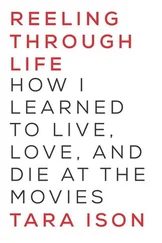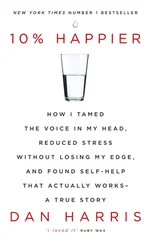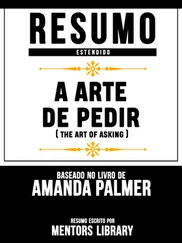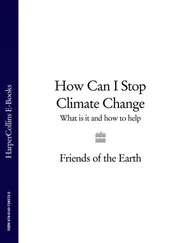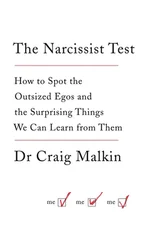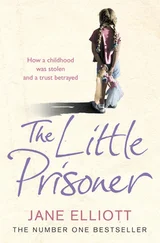That dad and his little girl didn’t want theater .
They didn’t want to be provoked.
They wanted to be entertained.
But they also wanted something more. They wanted connection .
It dawned on me, standing there in my white face paint and tutu, that I was effectively working in a service position: A strange combination of court jester, cocktail hostess, and minister. A strange, coin-operated jukebox of basic, kind, human encounters.
• • •
I learned a lesson on my first day of Bride-ing: standing on a plastic milk crate becomes REALLY uncomfortable after a few minutes as you sink slowly into the middle. It’s hell on your knees.
I would stand with my combat-boot-clad feet locked in place for half an hour, until the position became intolerable and I had to move. I would wait until I was between crowds, and then imperceptibly shift my weight from foot to foot, finding a new part of the crate to stand on. A few days later, I figured out that I could solve this problem by capping the milk crate with a square of hard plywood.
In my mute, frozen state, time and space took on a fascinating new quality, measured from one liberated movement to another, and I created an internal spoken dialogue with the world around me. I figured that if I said things loud enough in my head, the message would shoot out through my eyes.
Hi .
I’d blink my eyes a bit, and regard my new human friend, while they regarded me.
As they dropped money in my hat, I would lock my eyes onto theirs, and think:
Thank you .
*blink*
Here. Take a flower .
*blink*
And if I was in a particularly good mood:
I love you .
*blink*
• • •
What I hadn’t anticipated was the sudden, powerful encounters with people—especially lonely people who looked like they hadn’t connected with anyone in ages. I was amazed by the intimate moments of prolonged eye contact happening on the busy city sidewalk as traffic whizzed by, as sirens blared, as street vendors hawked their wares and activists thrust flyers at every passerby, as bedraggled transients tried to sell the local homeless community newspaper to rushing commuters… where more than a second or two of a direct, silent gaze between strangers is usually verboten.
My eyes would say:
Thank you. I see you .
And their eyes would say:
Nobody ever sees me .
Thank you .
• • •
Late one night at a yoga retreat a few years ago, a teacher asked a group of us to try to remember the first instance in our childhoods when we noticed that things were, for lack of a more clinical term, “not okay.” My answer was so quick to come and so deeply revealing that it made me laugh out loud. It is, in fact, my earliest intact memory. I was three.
There was a tall wooden staircase in our home, and one day I toppled all the way from the second floor to the first. I sharply remember that Am I going to die? slow-motion panic as I tumbled head over heels in a bouncing, cartoon blur. I was uninjured, but the fall had been traumatizing, and I ran, weeping and discombobulated, into the kitchen to recount the epic incident to my family.
Here’s what I remember. [1] Writer disclaimer: My mother is totally going to read this book and she’s probably going to call me after she reads this part and so I am going to preemptively tell her right here that I love her and this probably didn’t even happen even though I think I remember it and it’s really important to the story. HI MOM.
The kitchen was full of people: my mother, probably my stepfather, maybe my three older siblings, maybe some other random adults.
And none of them believed me.
They thought I was making it up. Trying to get attention. Exaggerating. Dramatizing.
And there I was, thirty-two years old, at a yoga retreat, desperately trying to find myself, and realizing that everything I’d been doing in my life, artistically, could be summed up like this:
PLEASE BELIEVE ME. I’M REAL. NO REALLY, IT HAPPENED. IT HURT.
And I sat there and laughed and laughed.
And cried. And laughed. At myself.
It was so embarrassing.
I laughed thinking about all the ridiculous stunts I’d pulled as an introverted, angry, punk teenager, dressing like an outlandish freak but being too insecure and afraid to talk to anybody. I laughed thinking about myself as an antisocial college senior who plonked her naked-and-covered-in-stage-blood body onto different spots around campus pretending to be dead as part of her postmodern performance art thesis, attempting to elicit some sort of reaction from the other students.
PLEASE. BELIEVE ME. I’M REAL. IT HURTS.
I laughed at the canon of heart-wrenching piano songs I’d written as a teenager, which added up to one screaming, pounding, screaming, pounding manifesto with a single, unified theme:
PLEASE. BELIEVE ME. I’M REAL.
I laughed thinking about the hundreds of hours I’d spent standing on a box, gazing silently and wistfully at passersby, handing them flowers in exchange for money. I laughed thinking about working in strip clubs during that same period, gyrating to Nick Cave and staring into the eyes of lonely, drunken strangers, challenging them to look into my soul instead of my crotch:
PLEASE. BELIEVE ME. I’M REAL.
I laughed thinking about all the nights I’d howled on concert hall stages, screaming those same old teenage songs at the top of my lungs, as aggressively and honestly and believably as I possibly could, to the point that I lost my voice almost every single night for a year and had to get surgery to cut away the rough, red nodes that had grown on my vocal cords as a result of too much yelling:
PLEASE. BELIEVE ME.
I laughed thinking about every single artist I knew—every writer, every actor, every filmmaker, every crazed motherfucker who had decided to forgo a life of predictable income, upward mobility, and simple tax returns, and instead pursued a life in which they made their living trying to somehow turn their dot-connecting brains inside out and show the results to the world—and how, maybe, it all boiled down to one thing:
BELIEVE ME.
Believe me.
I’m real .
• • •
Here’s the thing: all of us come from some place of wanting to be seen, understood, accepted, connected.
Every single one of us wants to be believed.
Artists are often just… louder about it.
• • •
At that same yoga retreat, we stood and faced each other in pairs, really looking at each other from a close distance. We were told to simply BE with the other person, maintaining eye contact, with no social gestures like laughing, smiling, or winking to put ourselves at ease.
Grown women and men cried. Really and truly sobbed.
When we were finished with the exercise, we talked about how it had felt. The thread echoed again and again: many people had never felt so seen by another person. Seen without walls, without judgment… just seen, acknowledged, accepted. The experience was—for so many—painfully rare.
• • •
Even cynical people got caught up in the romance of The Bride. People have a Thing with Brides.
I suppose I banked on this when I bought the dress. Who could hate a BRIDE?
There’s something magical, pure, beautiful. The virgin. The holy. The hopeful. Whatever.
I spent a lot of time on that box enjoying the irony of the fact that I was a bride for a living, stuck in this dress, while philosophically I knew I didn’t want to get married. Ever.
Читать дальше

